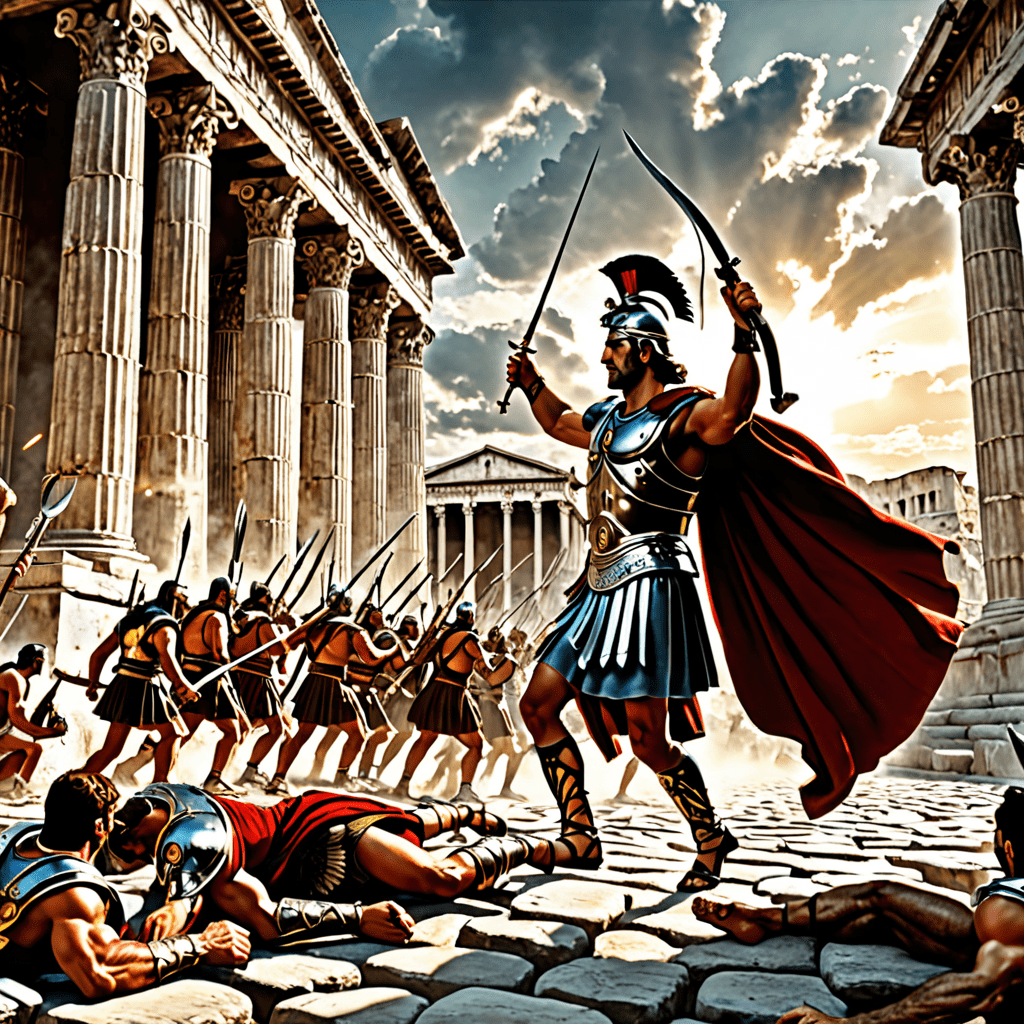The Floods of the Mediterranean: Myths from Ancient Civilizations
Introduction: The Significance of Flood Myths in Mediterranean Cultures
The Mediterranean region, with its rich tapestry of ancient civilizations including the Sumerians, Greeks, Egyptians, Phoenicians, and Romans, has long been a focal point for cultural exchange and myth-making. Flood myths are prevalent across these cultures, serving as powerful narratives that reflect humanity’s relationship with nature, particularly the often-destructive forces of water.
Floods in mythology often symbolize not only destruction but also rebirth and renewal. Through these stories, ancient peoples sought to explain natural disasters and their impact on society. This article explores the connections between myth and natural disasters in the Mediterranean, examining how floods shaped cultural narratives and historical contexts.
The Historical Context of Floods in the Mediterranean
The Mediterranean is characterized by its varied geological and climatic conditions, which contribute to its vulnerability to floods. Factors such as heavy rainfall, snowmelt from nearby mountains, and the region’s complex topography have historically led to significant flood events.
Some notable historical floods include:
- The flooding of the Tigris and Euphrates rivers in Mesopotamia.
- Severe flooding in the Nile during the reign of the Pharaohs.
- Flash floods in coastal cities like Pompeii and Herculaneum.
These floods had profound effects on ancient societies, impacting agriculture, settlement patterns, and cultural practices, often leading to the creation of myths that sought to explain these calamities.
Sumerian Flood Myths: The Epic of Gilgamesh
One of the earliest and most significant flood narratives comes from the Sumerian epic known as the Epic of Gilgamesh. In this tale, the hero Gilgamesh embarks on a quest for immortality and learns about a great flood sent by the gods to cleanse the earth of humanity’s sins.
The flood narrative parallels the Biblical story of Noah, with both tales featuring a favored individual who builds an ark to survive a divine deluge. Key similarities include:
- The divine decision to flood the earth.
- The construction of a vessel to save select humans and animals.
- The aftermath involving a covenant or promise from the divine.
The Sumerian flood myth has had a lasting cultural significance, influencing subsequent literature and religious narratives in the Mediterranean and beyond.
Greek Myths: Deucalion and Pyrrha
In Greek mythology, the story of Deucalion and Pyrrha recounts a great flood sent by Zeus to punish humanity for its wickedness. Deucalion, the son of Prometheus, and his wife Pyrrha are the sole survivors, and they repopulate the earth by throwing stones over their shoulders, which transform into humans.
This myth encapsulates themes of rebirth, survival, and the fragility of human existence. It has influenced later Greek literature and philosophical thought, emphasizing the cyclical nature of destruction and renewal in human history.
Egyptian Perspectives: The Nile and Its Flooding
The Nile River was central to ancient Egyptian civilization, providing water and fertile soil for agriculture. The annual flooding of the Nile, known as inundation, was celebrated as a life-giving event, crucial for crop growth.
Egyptian mythology is rich with narratives surrounding the Nile, including:
- The god Hapi, who personifies the flooding of the Nile.
- Stories of Osiris, whose death and resurrection are linked to the regenerative powers of the river.
While the Nile brought life, it also posed a threat, as excessive flooding could destroy crops and settlements. This duality reflects the complex relationship between the Egyptians and their environment, where the Nile was both a source of sustenance and a potential destroyer.
Phoenician Myths and the Connection to Canaanite Flood Stories
Phoenician mythology also contains flood narratives, often intertwined with Canaanite stories. One notable figure is Baal, a storm god whose battles with the sea god Yam are symbolic of the struggle against chaos and destruction.
The Canaanite story of the flood has striking similarities to other Mediterranean flood myths, illustrating cultural exchanges between civilizations. The Phoenicians, as traders and seafarers, disseminated their myths throughout the region, influencing neighboring cultures.
Roman Interpretations: Floods in the Aeneid and Other Works
In Roman literature, floods are often depicted as manifestations of divine wrath. Virgil’s Aeneid includes several references to floods, particularly in the context of divine retribution and the trials faced by Aeneas on his journey to found Rome.
Roman interpretations of floods were heavily influenced by Greek mythology, blending local traditions with Hellenic narratives. This intermingling of myth and local belief systems illustrates the Romans’ ability to adapt and integrate various cultural elements into their own literary canon.
Flood Myths in Lesser-Known Mediterranean Cultures
Beyond the well-documented civilizations, lesser-known cultures such as the Minoans and Etruscans also had their own flood myths. These myths, while not as prominent, share common themes of destruction and renewal. For example:
- The Minoans may have had stories linked to the volcanic eruption of Santorini, which caused significant upheaval.
- The Etruscans had tales that echoed themes of divine punishment and survival.
These lesser-known myths are crucial for understanding the broader landscape of Mediterranean beliefs and the pervasive nature of flood narratives across cultures.
Archaeological Evidence: Myth vs. Reality
Archaeological findings provide valuable insights into the relationship between myth and reality regarding ancient floods. Excavations in areas affected by significant flooding, such as the ruins of ancient Mesopotamia and Egypt, reveal evidence of catastrophic events that correlate with mythological narratives.
Key findings include:
- Layers of sediment indicating sudden flooding events.
- Artifacts and structures that suggest rapid abandonment or destruction due to water.
- Ancient texts that document floods, supporting the existence of these events.
These findings help bridge the gap between myth and historical reality, showing how ancient peoples interpreted natural disasters through the lens of their cultural narratives.
Conclusion
The flood myths of the Mediterranean reveal much about the ancient civilizations that created them. These narratives served not only to explain the devastating effects of natural disasters but also to communicate deeper truths about human existence, morality, and the cyclical nature of life and death. As we explore these myths, we gain valuable insights into the ways ancient peoples understood their world and the profound impact of floods on their societies.



